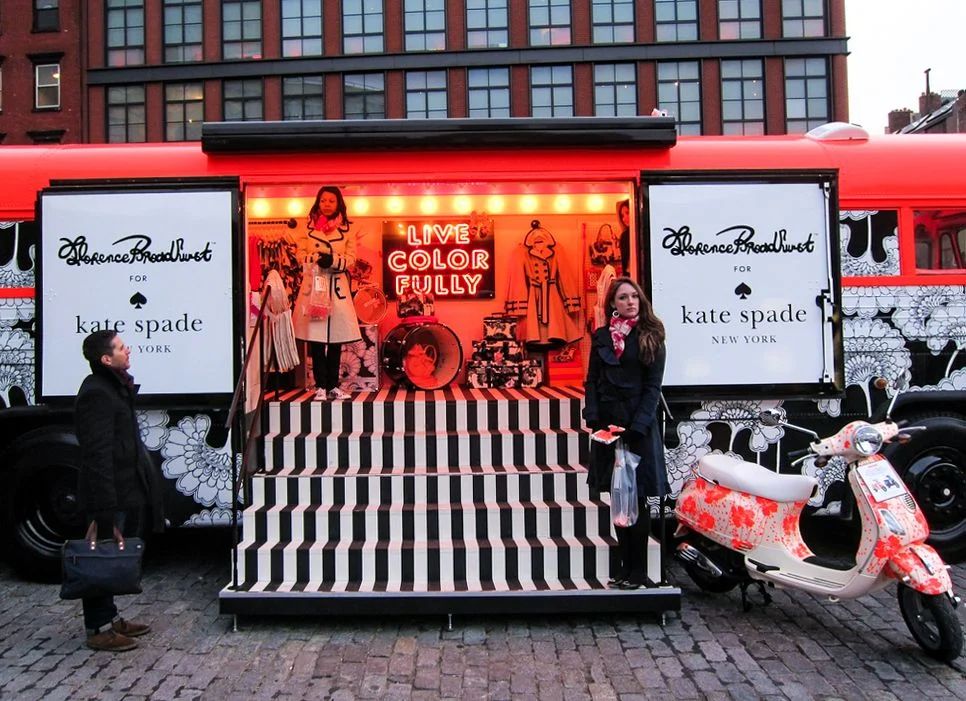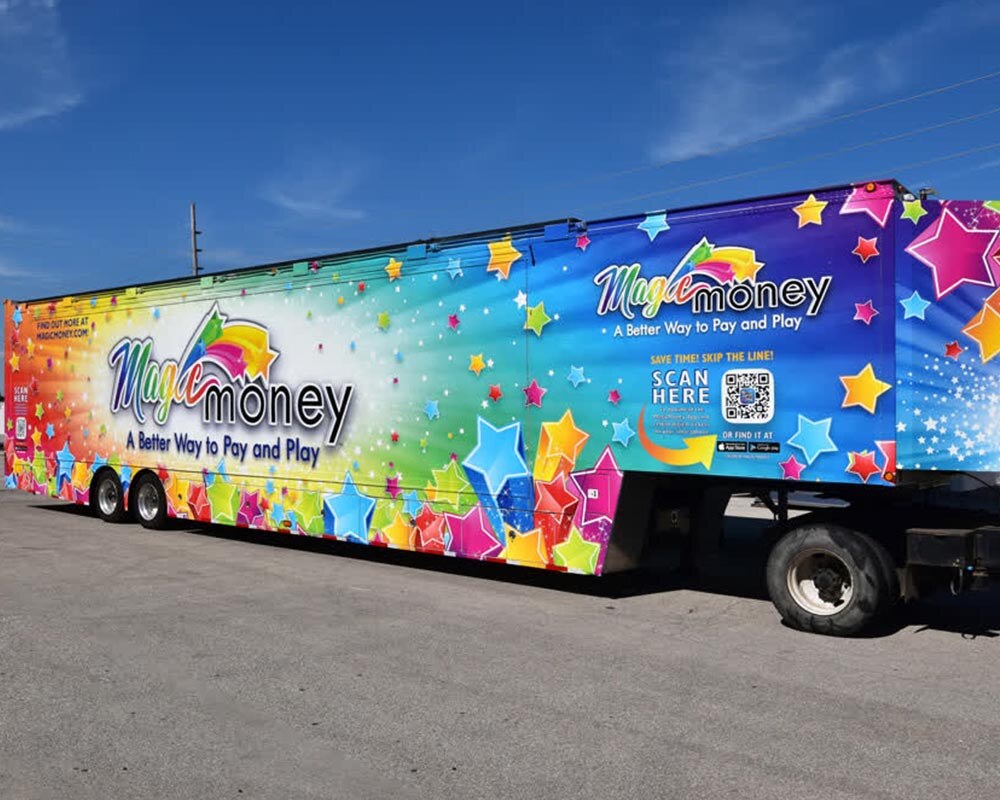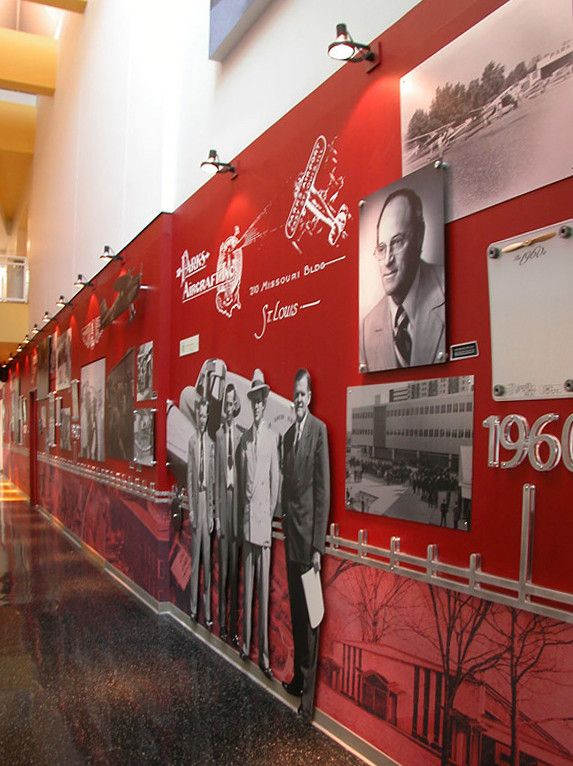The Business Value of High-Quality Fleet Graphics: ROI and Brand Visibility
Ever wonder how many eyes see your brand daily on the road? Fleet graphics aren't just decorations, they're your brand's most powerful moving...

Imagine strolling through a festival and spotting a vibrant truck with open doors and racks of stylish clothes inside. Welcome to the world of fashion trucks, where mobility meets style and every stop offers a fresh shopping experience. These mobile boutiques bring the latest trends directly to customers, transforming streets and events into pop-up fashion hubs.
For fashion entrepreneurs, a truck means freedom and lower startup costs compared to a storefront. They can go where the customers are. For shoppers, it's a fun, personal, and unexpected way to discover new looks.
This blog examines the emergence of fashion trucks, the process of launching one, and why they're making a lasting impact on retail. See how mobile fashion is changing the way we shop.
Fashion trucks are mobile boutiques built from vans, trailers, or buses that take retail directly to customers. Inside, they offer curated collections of clothing, jewelry, and accessories. Unlike traditional storefronts, fashion trucks:
This on‑the‑move model creates a sense of discovery and exclusivity that traditional stores can't match.
The fashion truck trend has accelerated nationwide, with nearly 1,000 trucks operating across the United States (American Mobile Retail Association). Key drivers include:
Early pioneers, such as Le Fashion Truck in Los Angeles and Haberdash Vintage in Boston, paved the way, inspiring cities nationwide to adopt this agile, boutique-on-wheels concept.
Selecting the right vehicle sets the stage for success:
Evaluate initial investment alongside long‑term flexibility and brand impact.
Design a boutique on wheels that customers will want to explore:
A well‑planned layout maximizes sales potential and customer comfort in a small space.
Curate a collection that tells your brand's story:
Distinctive, affordable merchandise drives repeat visits and social media buzz.
Stay compliant and protected from day one:
Work with local agencies and specialized brokers to avoid costly fines.
Turn heads both on the road and online:
A dynamic brand identity keeps customers coming back and encourages word-of-mouth referrals.
A fashion truck's design is key to attracting customers and creating a memorable shopping experience.
Bold colors and creative graphics help your truck stand out at any event. Clear, visible branding makes your boutique easy to spot and hard to forget.
Use modular shelving, organized racks, and a compact fitting room to maximize space. Add a seating area for comfort, and combine natural and artificial lighting to highlight your products and create an inviting atmosphere.
Align every detail, from your logo to your interior design, with your brand's identity. Strong, consistent branding builds trust and keeps your boutique memorable long after the visit.
Fashion Truck |
Location |
Key Features |
|
Clavillè Fashion Truck |
Richmond, VA |
Affordable items under $75, personalized styling, and community focus |
|
Truckshop |
Cincinnati, OH |
Curated items under $65, strong event presence |
|
The Fashion Truck |
Boston, MA |
Vintage and local designs, educational resources for entrepreneurs |
|
Passionista Fashion Truck |
Delaware |
Cozy interior, items from $8-$115, targets women 25-54 |
These examples show the creativity and variety within the fashion truck industry. Each truck brings its own style, from affordable pricing to unique inventory and community partnerships.
|
Challenge |
Solution |
|
Parking Regulations |
Partner with event organizers or businesses for legal parking. |
|
Inventory Management |
Utilize inventory software to monitor stock levels and prevent overstocking. |
|
Seasonal Fluctuations |
Consider offering online shopping or indoor pop-ups during the winter months. |
|
Competition |
Focus on unique products and exceptional customer service. |
Running a fashion truck comes with challenges, but careful planning and creative solutions help owners succeed.
Fashion trucks are integrating cutting‑edge tech to deliver seamless, personalized shopping:
By blending in-truck experiences with digital tools, mobile boutiques stay ahead of consumer expectations.
As the model gains momentum, operators are exploring new growth strategies:
This flexibility enables fashion trucks to reach a broader audience and pivot quickly as trends evolve.
A fashion truck is a mobile boutique, often a converted van, trailer, or bus, that travels to different locations, selling clothing, accessories, and jewelry directly to customers at events, markets, and city hotspots.
Startup costs can range from $10,000 to $30,000, depending on the vehicle, renovations, inventory, and branding. This is generally much lower than opening a traditional brick-and-mortar boutique.
Typically, you need a business license, a sales tax permit, and sometimes a special event or street vending permit, depending on the specific requirements of your location. Rules vary by city and state, so it's essential to check local regulations and insurance requirements.
Fashion trucks often attend festivals, farmers' markets, private events, pop-up locations, or partner with other businesses. They utilize social media, location-based announcements, and event participation to attract customers.
Inventory is typically curated, focusing on affordable, trendy women's clothing, accessories, and jewelry. Many truck companies partner with local designers or artisans for unique pieces, often keeping price points accessible (such as under $65).
Common challenges include finding legal parking, managing inventory in a small space, dealing with slow seasons, and competing with other boutiques. Solutions include utilizing inventory management software, partnering for event sponsorships, offering online sales, and focusing on unique products and exceptional customer service.
Fashion trucks are more than a passing trend. They represent a new way to shop, blending convenience, affordability, and personal service. For entrepreneurs, they offer a flexible and creative business model. For shoppers, they provide a unique and memorable retail experience.
If you're ready to bring your fashion vision to life on wheels, consider working with experts who understand the mobile retail landscape. For custom fabrication and support, contact Craftsmen Industries at (800) 373-3575 or visit www.craftsmenind.com to start your journey.

Ever wonder how many eyes see your brand daily on the road? Fleet graphics aren't just decorations, they're your brand's most powerful moving...

Every brand has a story to tell. It may be long or short, extravagant or down-to-earth. Whichever applies to your company, it is crucial to share...

Are Stadium Graphics Worth it for My Brand? Stadiums across the country facilitate huge amounts of energy, spending and celebration. It is exciting...